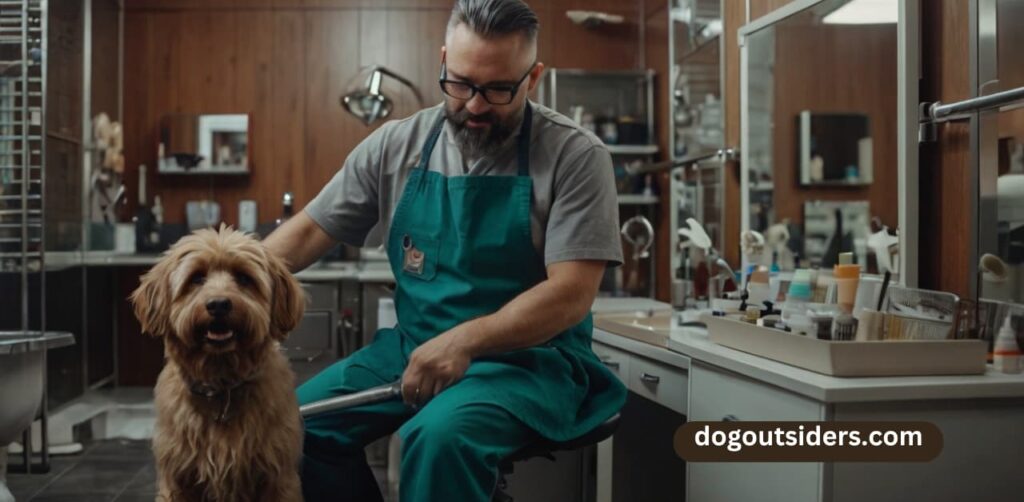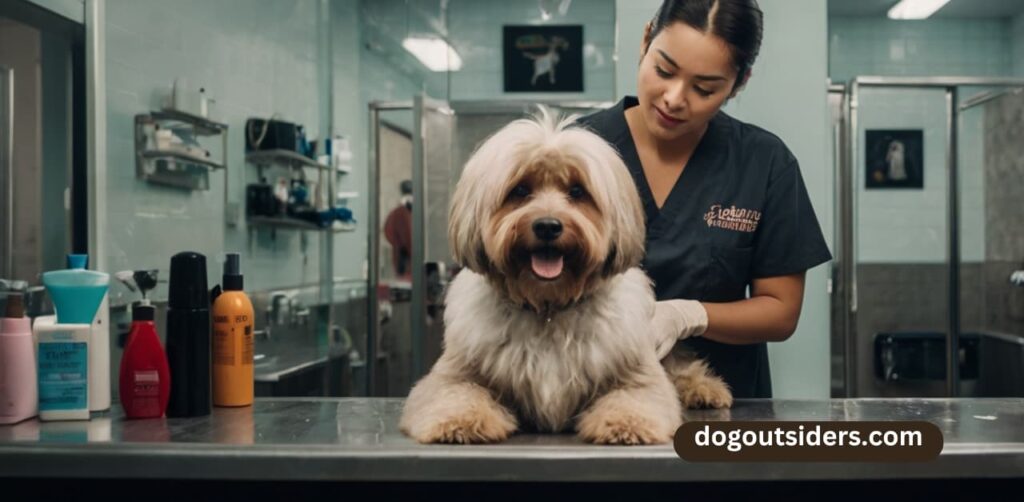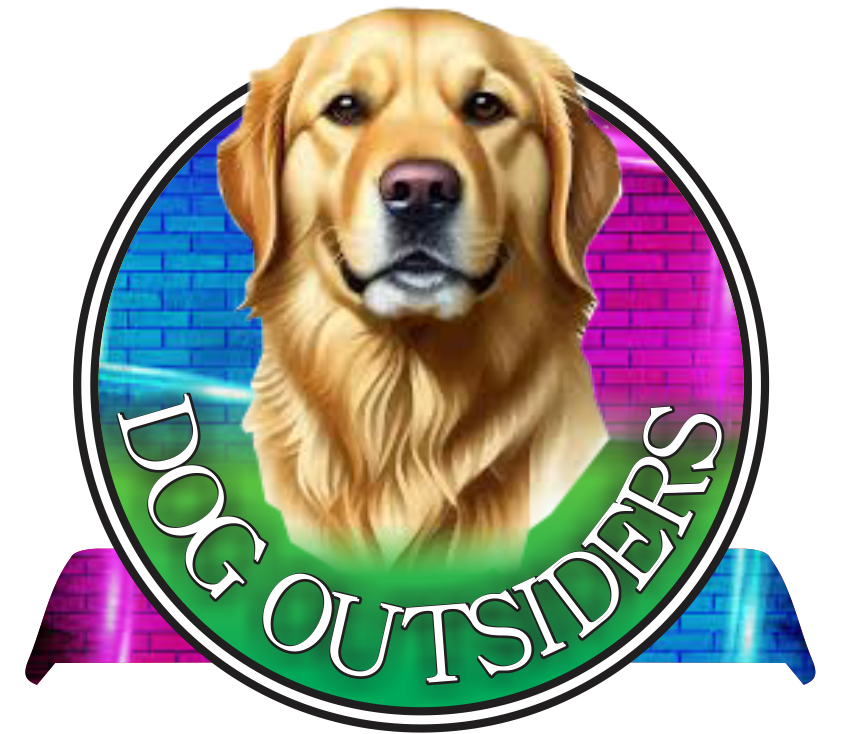Have you ever wondered how much it costs to become a pet groomer by taking a grooming course or an online pet grooming certificate program in a day? I’ve explored this field and found that the school cost and expenses can vary widely day by day, like a brick in professional dog grooming. From training programs to essential tools, including the certified dog groomer course, each step adds up.
Investing in quality education is crucial for success. I learned that pet grooming courses, such as a dog groomer program, typically range from a few hundred to several thousand dollars for dog groomer certification. Plus, don’t forget about the equipment—clippers, scissors, and shampoos can also hit your wallet hard, especially if you’re considering a dog grooming course, a dog groomer program, or a dog groomer certification course. It’s not just about the initial costs; ongoing expenses like continuing education and supplies matter too. In this post, I’ll break down all the costs involved in becoming a dog groomer, so you can plan your journey effectively.
Key Takeaways
- Becoming a dog groomer requires an investment; short-term training can range from a few hundred to several thousand dollars depending on the program.
- Long-term courses offer comprehensive training but come with higher fees; consider your budget and career goals when choosing a program.
- Certification is important in this field; factor in the costs of exams and certifications when planning your finances.
- Essential equipment, including grooming tools and supplies, can add up, so budget for these purchases early on.
- Ongoing education is crucial for staying updated with industry trends; allocate funds for workshops or advanced courses as you progress in your career.
- When comparing grooming schools, look for programs that offer flexible payment options to ease financial strain while pursuing your education.
Overview of Dog Grooming Costs

Training Expenses
Costs for a dog grooming program can vary widely. On average, training can range from $1,000 to $10,000. Many schools offer different programs, including online courses and hands-on training.
I found that local community colleges often provide affordable options. Their programs typically cost less than specialized grooming schools.
Equipment Investment
Purchasing equipment is another significant cost. Basic tools include clippers, brushes, and shampoos. Expect to spend between $300 and $1,500 on these supplies.
Quality tools last longer and improve the grooming process. Investing in professional-grade products makes a noticeable difference in results.
Location Impact
Location plays a critical role in determining overall grooming costs. Tuition rates differ by state and city. For instance, urban areas may have higher school fees compared to rural regions.
Local demand for professional dog groomers affects pricing. In high-demand areas, groomers might charge more for their services.
Ongoing Expenses
Budgeting for ongoing expenses is essential in this career. Regular grooming sessions require continuous investment in pet products. Groomers need to replenish their supplies frequently.
I learned that some groomers also invest in additional training to keep skills sharp. Attending workshops or seminars can add to costs but is beneficial for career growth.
Income Potential
Grooming services can yield a solid income once established. Many dog groomers earn between $30,000 and $50,000 annually. Experienced professionals can make even more.
The income potential often offsets initial costs over time. Building a loyal client base is crucial for success.
Final Thoughts
Becoming a professional dog groomer involves various financial considerations. Initial training and equipment costs are significant but manageable with proper planning.
Considering the ongoing expenses is vital for long-term success in the field. Understanding how location impacts both education and pricing helps aspiring groomers make informed decisions.
Short-Term Training Expenses
Course Costs
Short-term training courses for dog grooming vary widely in price. Basic workshops can cost anywhere from $200 to $1,500. These programs often last a few days to several weeks. They provide essential skills like bathing, brushing, and nail trimming. Some courses offer hands-on experience, while others focus on theory.
I found that investing in a well-structured course can boost your confidence. Learning from experienced groomers is invaluable. It helps to grasp the nuances of grooming techniques quickly.
Additional Fees
Beyond tuition, additional fees may apply. Registration fees typically range from $50 to $200. Supplies such as clippers, brushes, and shampoos can add another $100 to $300 to initial costs. Some courses require students to purchase specific materials upfront.
I remember budgeting carefully for my own training. I wanted to ensure I had all necessary tools before starting my first job. It’s crucial to factor in these expenses when considering short-term training.
Return on Investment
Evaluating the return on investment (ROI) from short-term training is important. Many graduates find jobs shortly after completing their courses. Entry-level groomers can earn between $30,000 and $50,000 annually. This income often increases with experience and skill level.
Short-term training can lead to certifications that enhance job prospects. Employers often prefer candidates with formal training. They look for groomers who demonstrate competence and professionalism.
I felt that my certification made a significant difference in my job search. It helped me stand out among other applicants. The skills gained during training were immediately applicable in real-world scenarios.
Job Readiness
Short-term courses aim to prepare students for the workforce quickly. Programs focus on practical skills needed in salons and mobile grooming businesses. Students learn how to handle dogs safely and effectively.
Many schools offer job placement assistance after graduation. This support can ease the transition into the workforce. Graduates often benefit from networking opportunities within the industry.
Long-Term Course Fees

Tuition Differences
Long-term dog grooming programs typically range from $3,000 to $10,000. These costs depend on the institution and course length. Comprehensive programs last several months to over a year. They cover various aspects of grooming, including techniques, animal behavior, and health care.
I found that investing in a long-term program offers more than just basic skills. It provides an in-depth understanding of the profession. This knowledge can set one apart in a competitive job market.
Financial Commitment
Enrolling in an extended course requires careful financial planning. Students should factor in potential hidden fees. Costs may include supplies, uniforms, and certification exams. Some schools charge extra for hands-on training sessions or specialized workshops.
For example, I learned that some programs offer payment plans to ease the burden. This flexibility can help manage tuition costs effectively. Researching different schools helps identify the best financial options available.
Career Advancement
Investing in a long-term grooming program has significant benefits. Graduates often find better job opportunities and higher salaries. Employers value comprehensive training and expertise. A well-rounded education leads to improved skills and confidence.
Many successful groomers attribute their achievements to extensive training. They emphasize that ongoing education keeps them updated with industry trends. My experience shows that building a solid foundation enhances career growth.
Certification and Exam Costs
Fees
Certification in dog grooming typically involves several fees. The cost of obtaining certification can range from $200 to $1,000. This amount varies based on the certifying organization and the level of certification sought. Some organizations offer basic certification, while others provide advanced levels that require more training and experience.
I believe investing in certification is crucial for anyone serious about a grooming career. It enhances your skills and boosts your credibility in the industry.
Exam Preparation Costs
Preparing for the certification exam incurs additional costs. Many candidates spend between $100 and $300 on study materials. These may include textbooks, online courses, or workshops. Some grooming schools also offer exam prep classes, which can add another $150 to $500 to your expenses.
Practice sessions are equally important. They help candidates build their skills before taking the exam. These sessions often cost around $50 to $100 per hour. I found that hands-on practice made a significant difference in my confidence when I took my certification exam.
Value of Certification
Certification holds substantial value in the dog grooming industry. It enhances credibility among clients and employers alike. Many pet owners look for certified groomers to ensure their pets receive quality care. Certified groomers often command higher rates due to their verified expertise.
Job prospects also improve with certification. Employers often prefer hiring certified professionals over non-certified ones. This preference can lead to better job opportunities and increased earning potential.
In summary, understanding the costs associated with becoming a certified dog groomer is essential. The initial investment in certification and exam preparation can seem high but pays off over time through enhanced job prospects and credibility.
Essential Equipment Purchases
Basic Tools
Starting a grooming business requires essential tools. The basic grooming tools include clippers, scissors, brushes, combs, and nail clippers. These items are crucial for providing quality services to clients.
Clippers are one of the most significant investments. Quality clippers can range from $100 to $300. Scissors also vary in price, typically costing between $30 and $200. Brushes and combs can be found for $10 to $50 each. Nail clippers are affordable, usually priced around $10 to $20.
I remember when I first started, I focused on purchasing high-quality clippers. They make a difference in efficiency and the final look of the groomed dog.
Grooming Tables and Accessories
A grooming table is another vital piece of equipment. A sturdy table helps ensure safety and comfort for both the groomer and the dog. Prices for grooming tables generally range from $150 to $500.
Other accessories such as drying equipment, shampoos, and conditioners also add to the cost. Dryers can cost between $100 to $400, depending on the model and features. Grooming products like shampoos and conditioners typically range from $10 to $50 each.
I found that investing in good-quality products not only saves money in the long run but enhances my reputation among clients.
Budgeting for Maintenance
Budgeting for ongoing maintenance is essential. Grooming tools require regular upkeep to maintain their effectiveness. Clippers need blade sharpening every few months, which costs about $20 per blade. Scissors also require sharpening, with a similar expense.
Replacement of worn-out tools is inevitable. It’s wise to set aside 10-15% of your overall equipment budget annually for replacements and repairs. This proactive approach helps avoid unexpected financial burdens.
I learned this lesson early on when my clippers broke during a busy week. Having a maintenance budget would have saved me stress and extra expenses.
Factors Affecting Costs
Several factors influence the total cost of becoming a dog groomer. The level of service you plan to offer impacts equipment choices. High-end services may require more specialized tools, increasing initial costs.
Location matters too. Urban areas might demand higher prices for equipment due to increased demand. Understanding your market will help tailor your purchases effectively.
Ongoing Education Incidentals

Importance of Learning
Continuous education is vital in the dog grooming industry. Techniques and trends evolve rapidly. Staying updated ensures that groomers provide the best care for their clients’ pets.
I often find that attending workshops improves my skills significantly. Learning new techniques can enhance my grooming services. It also helps me stand out in a competitive market.
Costs of Workshops
Attending workshops or seminars incurs additional costs. Fees vary based on location, duration, and instructor expertise. On average, a one-day workshop can cost between $100 to $500.
Tuition for advanced grooming courses typically falls between $1,000 and $3,000. These programs generally delve into specialized areas such as grooming techniques tailored to specific breeds or advanced styling methods.
Online Schooling Options
Many groomers opt for online schooling to reduce costs. Online programs offer flexibility and affordability. Tuition for online courses typically ranges from $300 to $1,500.
These programs allow students to learn at their own pace while balancing other responsibilities. They often include video tutorials and reading materials essential for skill development.
Networking Benefits
Ongoing education provides networking opportunities with industry professionals. Meeting experienced groomers can lead to valuable insights and mentorship.
I have benefited from connecting with others in the field during educational events. Sharing experiences enhances learning and fosters professional relationships.
Budgeting for Education
Creating a budget for ongoing education is crucial. Groomers should allocate funds annually for workshops, online courses, and seminars. A recommended budget might be around 10% of your annual income dedicated to personal development.
This investment pays off by improving skills and increasing earning potential over time. Staying informed about industry trends keeps groomers marketable.
Research and Reading
Research plays an important role in ongoing education. Reading industry publications keeps groomers informed about new products and techniques. Subscribing to grooming magazines or online forums offers insights into current trends.
I make it a habit to read articles regularly. This practice helps me stay ahead in my career and understand customer preferences better.
Comparing Grooming Schools
Online Courses
Online dog grooming courses offer flexibility. Students can learn at their own pace. This option suits those with busy schedules. However, the lack of hands-on experience can be a drawback. Practical skills are essential in grooming. I found that while online programs provide foundational knowledge, they often miss real-world application.
Tuition for online programs varies. Some courses cost as little as $300, while others exceed $1,000. Many online pet grooming certificate programs include video tutorials and quizzes. These resources help reinforce learning. Yet, students may miss out on direct feedback from instructors.
In-Person Programs
In-person grooming schools provide hands-on training. Students practice on live animals under supervision. This experience is invaluable for developing professional grooming skills. The interaction with instructors allows for immediate feedback and improvement. Classes usually run from several weeks to a few months.
Tuition for in-person courses ranges widely. Costs typically start around $1,500 and can reach up to $5,000. Factors like location and program length affect pricing. I noticed that some schools offer financing options, making it easier to manage expenses.
Curriculum Comparison
The curriculum varies significantly among grooming schools. A comprehensive dog grooming program curriculum includes anatomy, breed-specific styles, and safety protocols. Schools may also cover business management and customer service skills. These aspects prepare students for the workforce.
Reputation matters when choosing a grooming school. Researching accreditation can guide decisions. Accredited programs often have better resources and job placement rates. I recommend looking into reviews from former students for insights into their experiences.
Student Reviews
Student reviews reveal much about a school’s quality of education. High success rates indicate effective teaching methods and support systems. Many graduates share their experiences on social media or forums.
Positive feedback often highlights supportive instructors and thorough training programs. Conversely, negative reviews may point to inadequate hands-on practice or poor communication with staff.
I believe personal experiences shared by students can guide prospective groomers in selecting the right school.
Payment Options for Courses
Upfront Payments
Many dog grooming schools offer upfront payment options. This method often provides a clear path to enrollment. I prefer this option because it eliminates future payment worries. Students can pay the full tuition in one go. This approach may also come with discounts. Some schools reduce the total cost if you pay upfront.
Installment Plans
Installment plans are another viable choice. These plans allow students to break down tuition into smaller, manageable payments. Monthly installments can ease financial pressure. Many programs offer flexible terms, which makes education more accessible. Prospective groomers should evaluate their budget before choosing this option
Discounts for Full Payments
Discounts can significantly impact total costs. Schools frequently offer incentives for those who pay in full. For instance, a program might reduce tuition by 10% or more for upfront payments. This savings can be substantial when considering the overall expense of becoming a dog groomer.
Financing Options
Financing options are essential for many students. They make it easier to afford tuition without immediate large sums of money. Various organizations provide loans specifically for vocational training. I have seen some schools partner with financing companies to help students manage costs effectively. Understanding these options can help prospective groomers make informed decisions.
Online Courses and Programs
Online courses have gained popularity in recent years. They provide flexibility for students balancing work and education. Many reputable programs offer AKC Canine College modules online. These courses allow learners to study at their own pace while still receiving quality instruction.
Local vs. Brick-and-Mortar Schools
Choosing between online courses and brick-and-mortar locations is vital. Local schools often provide hands-on experience that online programs cannot match. However, online courses may suit those who need more flexibility or live far from a grooming school. Evaluating personal needs and goals is crucial when selecting a program.
Shop Experience
Gaining experience in a shop setting is beneficial for aspiring groomers. Many schools include practical training as part of their curriculum. This hands-on experience prepares students for real-world scenarios they will face in the field.
Closing Thoughts
Becoming a dog groomer involves various costs, from short-term training to long-term education. I’ve highlighted the essentials, including equipment purchases and certification fees. Each expense contributes to building a successful career in this rewarding field. Understanding these financial aspects can help me make informed decisions about my path.
Investing in my education and skills pays off in the long run. I encourage anyone considering this career to weigh their options carefully. Explore different schools, payment plans, and ongoing education opportunities. The right choice can set me up for success in dog grooming. Take that leap and start your journey today!
Frequently Asked Questions
Becoming a dog groomer typically costs between $1,000 and $5,000. This includes training, certification, and equipment expenses.
Short-term training programs can range from $300 to $1,500. These often include workshops and hands-on classes that provide foundational skills.
Yes, long-term grooming courses can cost between $2,000 and $10,000. These programs offer in-depth training over several months or years.
Certification costs vary but generally range from $200 to $600. This includes exam fees and study materials needed for successful completion.
Essential grooming equipment can cost around $500 to $1,500. This includes clippers, brushes, scissors, and grooming tables.
Yes, ongoing education can cost between $100 and $500 annually. This covers workshops, seminars, and new product training to stay updated in the field.
Many grooming schools offer flexible payment options. You can find plans like installment payments, financial aid, or even scholarships to ease your financial burden.






